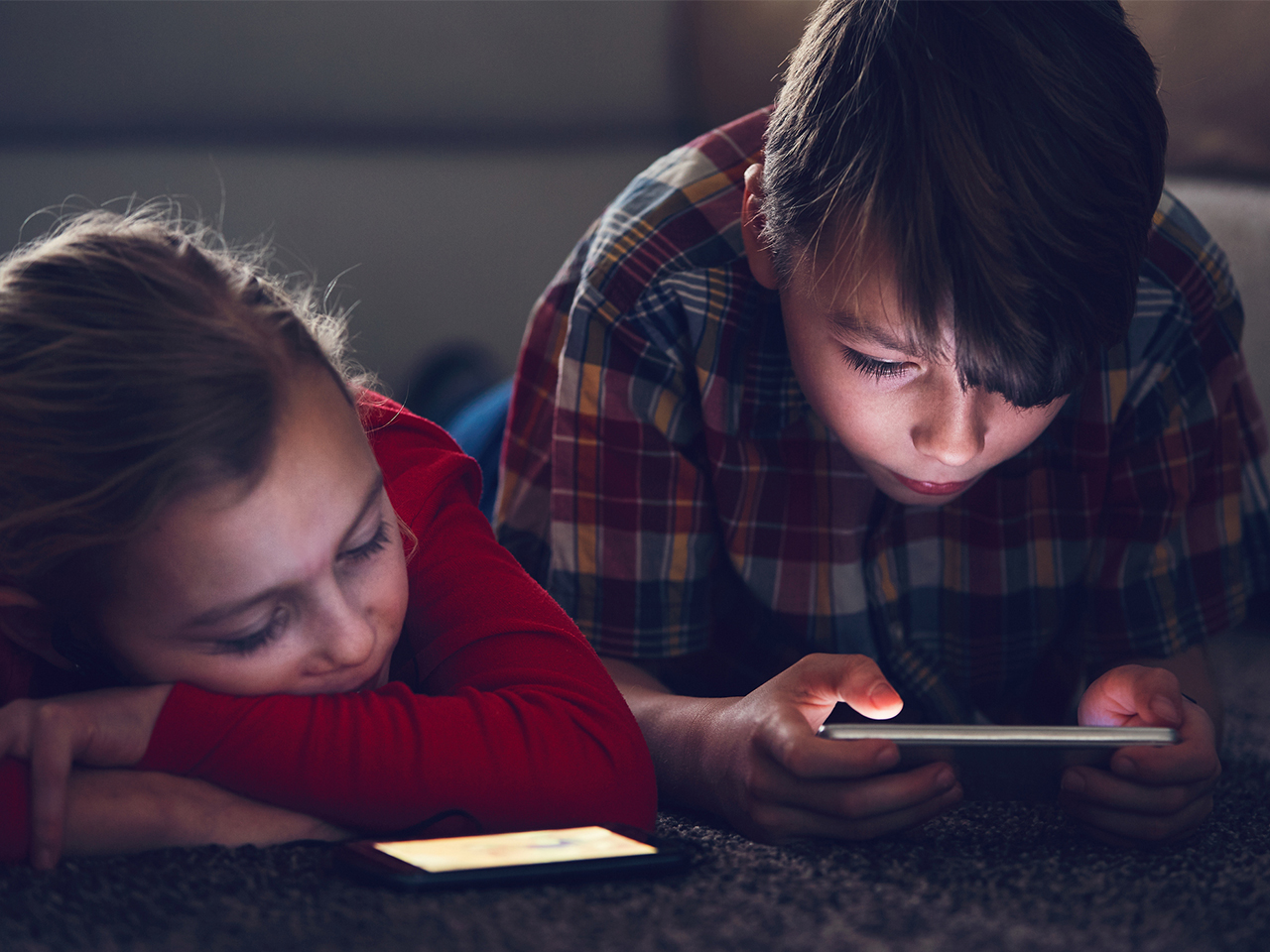
In this time of online learning from home, children are now required to spend more time than usual on the screen. On average, children and teens spend up to 9 hours a day online. Though distance-learning is unavoidable right now, playing time and entertainment on the screen can—and should—be monitored. The American Academy of Pediatrics (AAP) recommends that children between ages 2 to 5 should only have up to an hour a day of screen time, such as watching T.V. or playing games.
Higher screen time has been associated with a greater risk of depression for adolescents. Another studyfrom 2018 showed that children and teens who had increased screen time use displayed less curiosity, emotional stability, and self-control. Twice as many students also had a diagnosis of depression or anxiety in comparison to those who spent less time on their electronic devices. Other signs that your child is spending too much time in front of a screen can manifest in emotional outbursts or a lack of interest in anything aside from their games or entertainment. It is vital to balance their screen time with offline activities as learning from home continues to keep your child from becoming addicted or at a higher risk for depression or anxiety.
There are a few ways to manage your child’s screen time, such as designating media-free hours together and media-free zones. Not allowing children to sleep with devices in their bedrooms can help them get better sleep during the night. Instead, they can leave their devices to charge outside of their room. Parents can also create personalized plans through the AAP website for their family’s media use, which considers their children’s age, health, personality, and development stage. Doing this with your child or teen can give them more autonomy and feel better committing to self-set goals for time on-screen and off-screen.
In the mornings, have your children make it a habit to start their day before school with no screen time. Even if your child starts school at 8 A.M., have them wake up earlier to wash up, eat breakfast, and get dressed before logging on for their first class. All of these activities can be done without them needing to check their devices, and it can help them wake up and focus a little better on their surroundings before sitting in front of the screen for learning.
For little ones, parents should be more careful about how much screen time they use. Encourage your child to read print books or read to or with your children as much as possible. If available, have your students use textbooks instead of PDFs to encourage them to do more off-screen studying. Have discussions about what they learned in class that day to see if they can recall their studies. For young elementary students, encourage their imagination through storytelling and drawing.
If possible, break up your child’s learning hours with breaks away from the screen. Planning time for your child to get physical exercise just like they would in P.E. or during recess is another way to get them on their feet and away from the computer. Set timers or alarms to
remind you and your child to get some fresh air or have a snack away from their laptop. You can go on a bike ride or go for a walk with them to make sure they aren’t sitting down and remaining inactive all day.
For older students, encourage them to video chat with their friends through Zoom or FaceTime instead of scrolling through social media. Apps like Twitter, Instagram, or Facebook can make youths feel socially isolated and become more reliant on their devices for entertainment. Instead, having teens socialize with their friends face-to-face even if it is over a screen can be more productive and help them feel more connected.
After online learning and school activities are finished, limit your child’s use of electronics until they finish their homework for the day. Messaging, games, and apps are fun distractions, but these can take away from your child’s focus on their academics. After their work is complete, however, you can structure their unsupervised screen time with time limits.
For elementary students, no more than an hour should be spent on social media or playing games on electronics. For teens, 2 hours a day is recommended by the AAP, not including schoolwork. Particularly for younger students, it is important to supervise their online activity as much as you can to ensure they are using their devices in positive ways.
This is a unique time and situation where screen time is required for learning, but there are still ways you can manage your child’s online activities. Regardless of their age, working with your students to take healthy mental and physical breaks from electronics together can be the best motivator and encourage more positive family interactions.

Emily currently lives in Orange County, California after spending four years in Illinois and half a year teaching in Florence, Italy. She holds a B.A. in English Literature from Knox College and an M.A. in Counseling from the University of San Diego and has taught English to native speakers and ESL students for over three years. When she’s not working as a School Counselor or writing, she enjoys traveling the world, playing instruments, and blogging about Millennial experiences at Long Live the Twenties.
